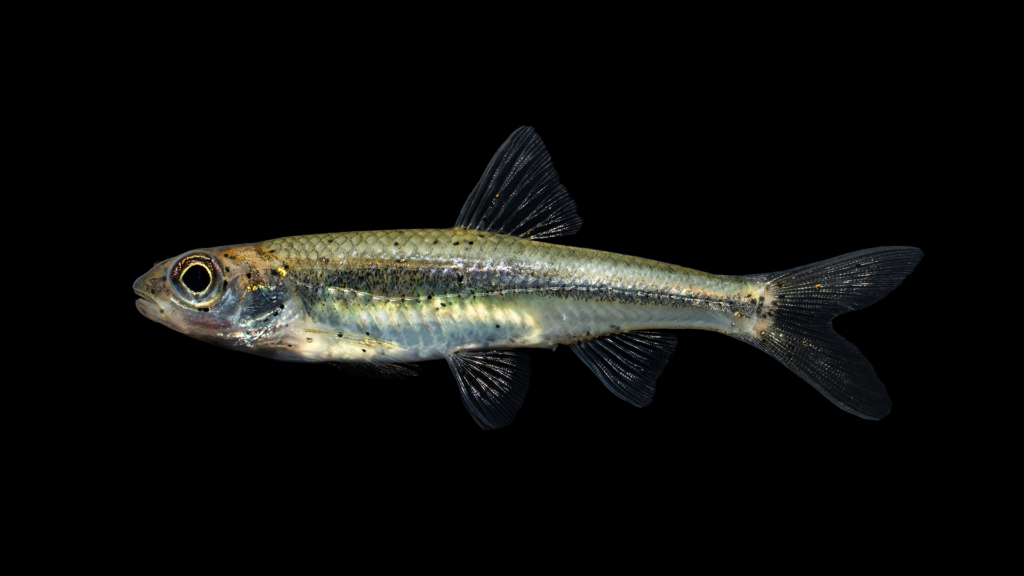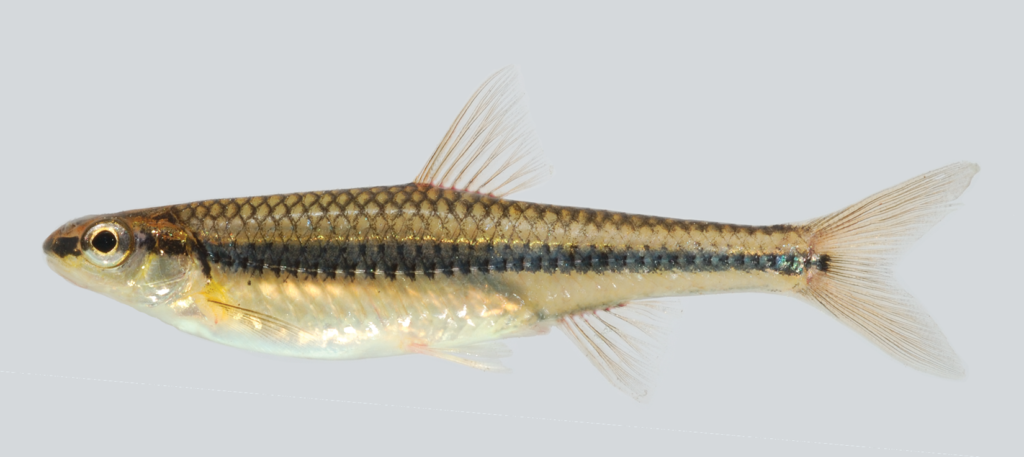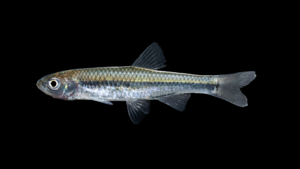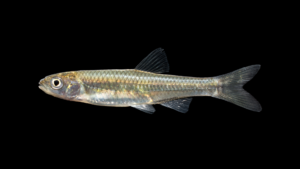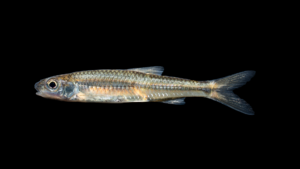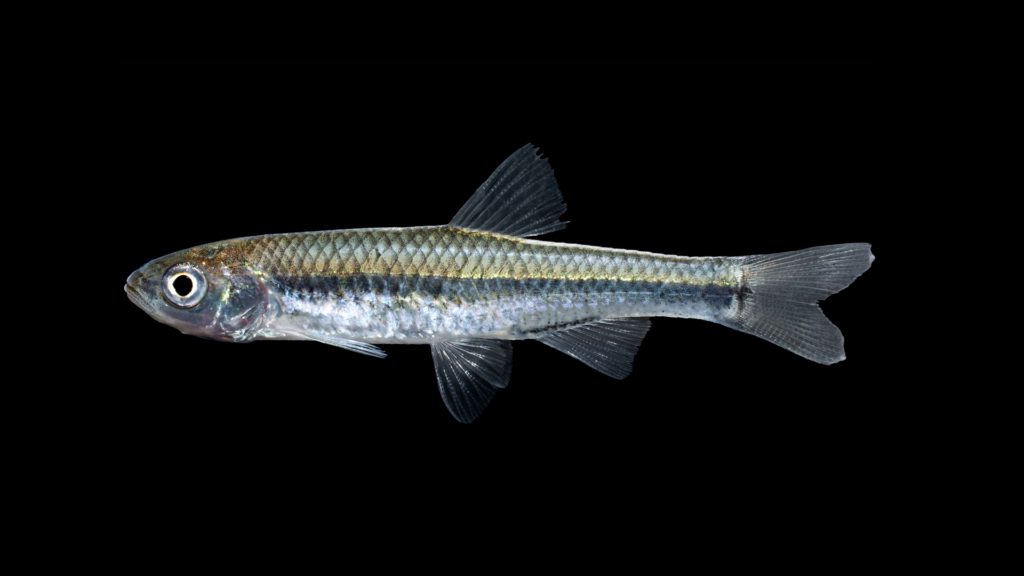
| Family | Scientific Name | Author | Year | Common Name |
| Leuciscidae | Paranotropis volucellus | (Cope) | 1865 | Mimic Shiner |
Paranotropis volucellus
Unique Characters: Broad, rounded snout. Scales along back in front of dorsal fin wider than adjacent scales. Scales alongside on front half of body much deeper (vertically elongated, about 3 times) than wide. Small, slightly subterminal mouth. Large eye. Body humped, deepest near center of nape. Neuromasts, tiny pit-like sensory structures, well developed on the head. Tubercles absent or poorly developed. Breast naked or rarely fully scaled. Dorsal stripe absent; lateral stripe diffuse anteriorly.
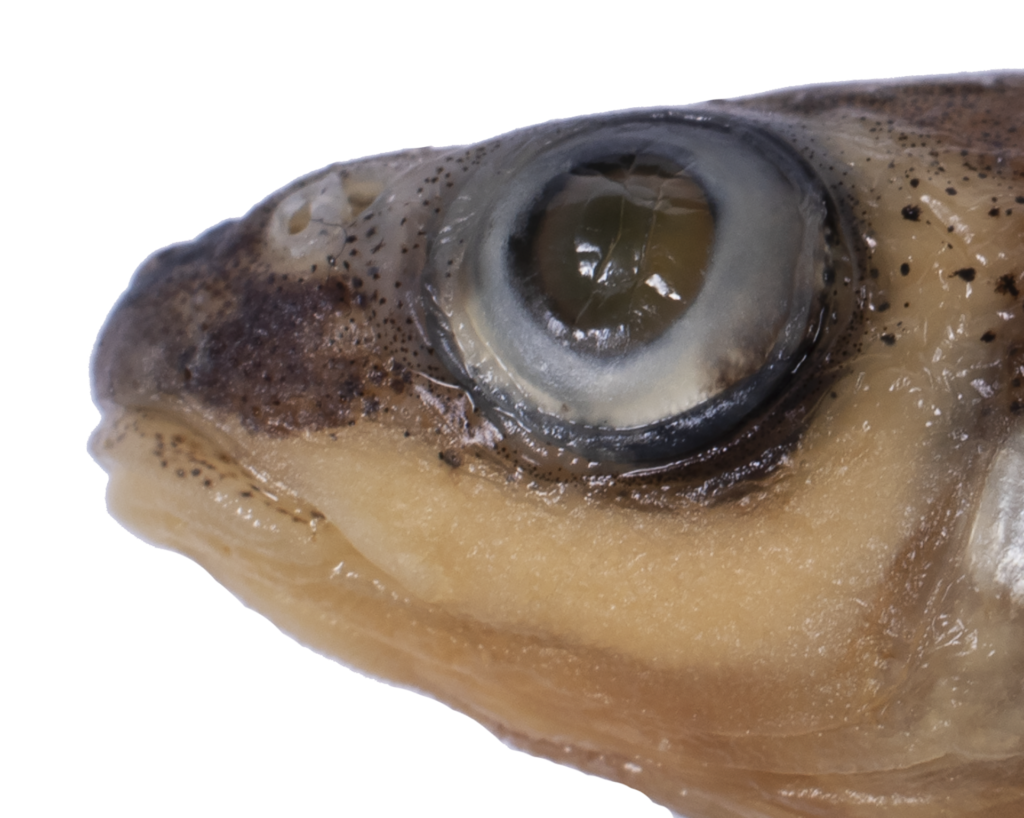
Similar Species:
New River Shiner
Miniellus scabriceps
Swallowtail Shiner
Miniellus procne
New River Shiner Miniellus scabriceps. Anterior lateral line scale vertically elongated, height about 2 times the width. Tubercles well developed on snout and lower cheek. Neuromasts absent.
Swallowtail Shiner Miniellus procne. Black stripe on side, anterior to eye, but not on snout. Caudal spot disconnected from lateral stripe. Pointed snout and horizontal mouth. Anal fin base heavily pigmented. Usually 7 anal fin rays. Usually unscaled breast. Complete lateral line. Dash (smudge) of black pigment at base of dorsal fin. Very white sides below lateral line and venter; melanophores absent along the sides and above the anal fin. In life, it has two light dashes along the back before and after dorsal fin. Straw yellow-colored during spawning season. The population(s) in the lower Catawba appear “different” from their eastern counterparts in terms of overall body color and physical appearance. In some respects they appear to resemble Sand Shiner, Notropis stramineus.
Gallery
